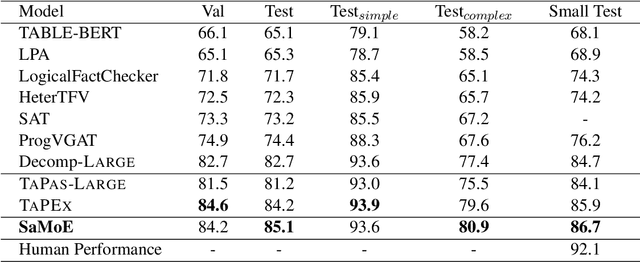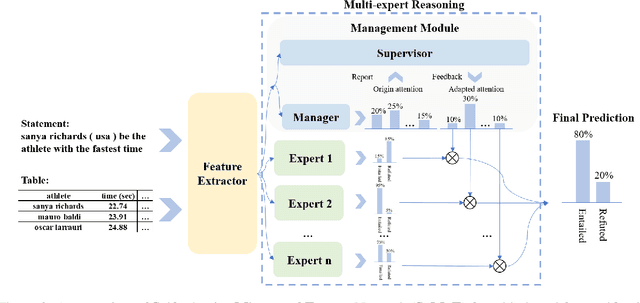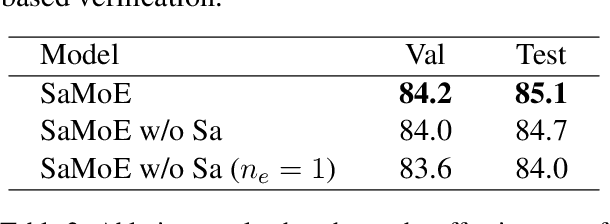Xien Liu
MKE-Coder: Multi-Axial Knowledge with Evidence Verification in ICD Coding for Chinese EMRs
Feb 19, 2025Abstract:The task of automatically coding the International Classification of Diseases (ICD) in the medical field has been well-established and has received much attention. Automatic coding of the ICD in the medical field has been successful in English but faces challenges when dealing with Chinese electronic medical records (EMRs). The first issue lies in the difficulty of extracting disease code-related information from Chinese EMRs, primarily due to the concise writing style and specific internal structure of the EMRs. The second problem is that previous methods have failed to leverage the disease-based multi-axial knowledge and lack of association with the corresponding clinical evidence. This paper introduces a novel framework called MKE-Coder: Multi-axial Knowledge with Evidence verification in ICD coding for Chinese EMRs. Initially, we identify candidate codes for the diagnosis and categorize each of them into knowledge under four coding axes.Subsequently, we retrieve corresponding clinical evidence from the comprehensive content of EMRs and filter credible evidence through a scoring model. Finally, to ensure the validity of the candidate code, we propose an inference module based on the masked language modeling strategy. This module verifies that all the axis knowledge associated with the candidate code is supported by evidence and provides recommendations accordingly. To evaluate the performance of our framework, we conduct experiments using a large-scale Chinese EMR dataset collected from various hospitals. The experimental results demonstrate that MKE-Coder exhibits significant superiority in the task of automatic ICD coding based on Chinese EMRs. In the practical evaluation of our method within simulated real coding scenarios, it has been demonstrated that our approach significantly aids coders in enhancing both their coding accuracy and speed.
MIH-TCCT: Mitigating Inconsistent Hallucinations in LLMs via Event-Driven Text-Code Cyclic Training
Feb 13, 2025Abstract:Recent methodologies utilizing synthetic datasets have aimed to address inconsistent hallucinations in large language models (LLMs); however,these approaches are primarily tailored to specific tasks, limiting their generalizability. Inspired by the strong performance of code-trained models in logic-intensive domains, we propose a novel framework that leverages event-based text to generate corresponding code and employs cyclic training to transfer the logical consistency of code to natural language effectively. Our method significantly reduces inconsistent hallucinations across three leading LLMs and two categories of natural language tasks while maintaining overall performance. This framework effectively alleviates hallucinations without necessitating adaptation to downstream tasks, demonstrating generality and providing new perspectives to tackle the challenge of inconsistent hallucinations.
Data Augmentation Techniques for Chinese Disease Name Normalization
Jan 02, 2025


Abstract:Disease name normalization is an important task in the medical domain. It classifies disease names written in various formats into standardized names, serving as a fundamental component in smart healthcare systems for various disease-related functions. Nevertheless, the most significant obstacle to existing disease name normalization systems is the severe shortage of training data. Consequently, we present a novel data augmentation approach that includes a series of data augmentation techniques and some supporting modules to help mitigate the problem. Through extensive experimentation, we illustrate that our proposed approach exhibits significant performance improvements across various baseline models and training objectives, particularly in scenarios with limited training data
PretextTrans: Investigating Medical Factual Knowledge Mastery of LLMs with Predicate-text Dual Transformation
Sep 22, 2024Abstract:In the study, we aim to investigate current LLMs' mastery of medical factual knowledge with a dynamic evaluation schema, which can automatically generate multiple test samples for each medical factual knowledge point. Test samples produced directly by LLMs always introduce factual errors and lack diversity in the manner of knowledge expression. To overcome the drawbacks, here we propose a novel evaluation method, Predicate-text Dual Transformation (PretextTrans), by introducing predicate transformations into the dynamic evaluation schema. Specifically, each medical knowledge point is firstly transformed into a predicate expression; then, the predicate expression derives a series of variants through predicate transformations; lastly, the produced predicate variants are transformed back into textual expressions, resulting in a series of test samples with both factual reliability and expression diversity. Using the proposed PretextTrans method, we systematically investigate 12 well-known LLMs' mastery of medical factual knowledge based on two medical datasets. The comparison results show that current LLMs still have significant deficiencies in fully mastering medical knowledge, which may illustrate why current LLMs still perform unsatisfactorily in real-world medical scenarios despite having achieved considerable performance on public benchmarks. Our proposed method serves as an effective solution for evaluation of LLMs in medical domain and offers valuable insights for developing medical-specific LLMs.
MultifacetEval: Multifaceted Evaluation to Probe LLMs in Mastering Medical Knowledge
Jun 05, 2024Abstract:Large language models (LLMs) have excelled across domains, also delivering notable performance on the medical evaluation benchmarks, such as MedQA. However, there still exists a significant gap between the reported performance and the practical effectiveness in real-world medical scenarios. In this paper, we aim to explore the causes of this gap by employing a multifaceted examination schema to systematically probe the actual mastery of medical knowledge by current LLMs. Specifically, we develop a novel evaluation framework MultifacetEval to examine the degree and coverage of LLMs in encoding and mastering medical knowledge at multiple facets (comparison, rectification, discrimination, and verification) concurrently. Based on the MultifacetEval framework, we construct two multifaceted evaluation datasets: MultiDiseK (by producing questions from a clinical disease knowledge base) and MultiMedQA (by rephrasing each question from a medical benchmark MedQA into multifaceted questions). The experimental results on these multifaceted datasets demonstrate that the extent of current LLMs in mastering medical knowledge is far below their performance on existing medical benchmarks, suggesting that they lack depth, precision, and comprehensiveness in mastering medical knowledge. Consequently, current LLMs are not yet ready for application in real-world medical tasks. The codes and datasets are available at https://github.com/THUMLP/MultifacetEval.
TinyLLaVA: A Framework of Small-scale Large Multimodal Models
Feb 22, 2024Abstract:We present the TinyLLaVA framework that provides a unified perspective in designing and analyzing the small-scale Large Multimodal Models (LMMs). We empirically study the effects of different vision encoders, connection modules, language models, training data and training recipes. Our extensive experiments showed that better quality of data combined with better training recipes, smaller LMMs can consistently achieve on-par performances compared to bigger LMMs. Under our framework, we train a family of small-scale LMMs. Our best model, TinyLLaVA-3.1B, achieves better overall performance against existing 7B models such as LLaVA-1.5 and Qwen-VL. We hope our findings can serve as baselines for future research in terms of data scaling, training setups and model selections. Our model weights and codes will be made public.
Exploring semantic information in disease: Simple Data Augmentation Techniques for Chinese Disease Normalization
Jun 02, 2023



Abstract:The disease is a core concept in the medical field, and the task of normalizing disease names is the basis of all disease-related tasks. However, due to the multi-axis and multi-grain nature of disease names, incorrect information is often injected and harms the performance when using general text data augmentation techniques. To address the above problem, we propose a set of data augmentation techniques that work together as an augmented training task for disease normalization. Our data augmentation methods are based on both the clinical disease corpus and standard disease corpus derived from ICD-10 coding. Extensive experiments are conducted to show the effectiveness of our proposed methods. The results demonstrate that our methods can have up to 3\% performance gain compared to non-augmented counterparts, and they can work even better on smaller datasets.
THiFLY Research at SemEval-2023 Task 7: A Multi-granularity System for CTR-based Textual Entailment and Evidence Retrieval
Jun 02, 2023Abstract:The NLI4CT task aims to entail hypotheses based on Clinical Trial Reports (CTRs) and retrieve the corresponding evidence supporting the justification. This task poses a significant challenge, as verifying hypotheses in the NLI4CT task requires the integration of multiple pieces of evidence from one or two CTR(s) and the application of diverse levels of reasoning, including textual and numerical. To address these problems, we present a multi-granularity system for CTR-based textual entailment and evidence retrieval in this paper. Specifically, we construct a Multi-granularity Inference Network (MGNet) that exploits sentence-level and token-level encoding to handle both textual entailment and evidence retrieval tasks. Moreover, we enhance the numerical inference capability of the system by leveraging a T5-based model, SciFive, which is pre-trained on the medical corpus. Model ensembling and a joint inference method are further utilized in the system to increase the stability and consistency of inference. The system achieves f1-scores of 0.856 and 0.853 on textual entailment and evidence retrieval tasks, resulting in the best performance on both subtasks. The experimental results corroborate the effectiveness of our proposed method. Our code is publicly available at https://github.com/THUMLP/NLI4CT.
How can Deep Learning Retrieve the Write-Missing Additional Diagnosis from Chinese Electronic Medical Record For DRG
Mar 28, 2023Abstract:The purpose of write-missing diagnosis detection is to find diseases that have been clearly diagnosed from medical records but are missed in the discharge diagnosis. Unlike the definition of missed diagnosis, the write-missing diagnosis is clearly manifested in the medical record without further reasoning. The write-missing diagnosis is a common problem, often caused by physician negligence. The write-missing diagnosis will result in an incomplete diagnosis of medical records. While under DRG grouping, the write-missing diagnoses will miss important additional diagnoses (CC, MCC), thus affecting the correct rate of DRG enrollment. Under the circumstance that countries generally start to adopt DRG enrollment and payment, the problem of write-missing diagnosis is a common and serious problem. The current manual-based method is expensive due to the complex content of the full medical record. We think this problem is suitable to be solved as natural language processing. But to the best of our knowledge, no researchers have conducted research on this problem based on natural language processing methods. We propose a framework for solving the problem of write-missing diagnosis, which mainly includes three modules: disease recall module, disease context logic judgment module, and disease relationship comparison module. Through this framework, we verify that the problem of write-missing diagnosis can be solved well, and the results are interpretable. At the same time, we propose advanced solutions for the disease context logic judgment module and disease relationship comparison module, which have obvious advantages compared with the mainstream methods of the same type of problems. Finally, we verified the value of our proposed framework under DRG medical insurance payment in a tertiary hospital.
Table-based Fact Verification with Self-adaptive Mixture of Experts
Apr 19, 2022



Abstract:The table-based fact verification task has recently gained widespread attention and yet remains to be a very challenging problem. It inherently requires informative reasoning over natural language together with different numerical and logical reasoning on tables (e.g., count, superlative, comparative). Considering that, we exploit mixture-of-experts and present in this paper a new method: Self-adaptive Mixture-of-Experts Network (SaMoE). Specifically, we have developed a mixture-of-experts neural network to recognize and execute different types of reasoning -- the network is composed of multiple experts, each handling a specific part of the semantics for reasoning, whereas a management module is applied to decide the contribution of each expert network to the verification result. A self-adaptive method is developed to teach the management module combining results of different experts more efficiently without external knowledge. The experimental results illustrate that our framework achieves 85.1% accuracy on the benchmark dataset TabFact, comparable with the previous state-of-the-art models. We hope our framework can serve as a new baseline for table-based verification. Our code is available at https://github.com/THUMLP/SaMoE.
 Add to Chrome
Add to Chrome Add to Firefox
Add to Firefox Add to Edge
Add to Edge